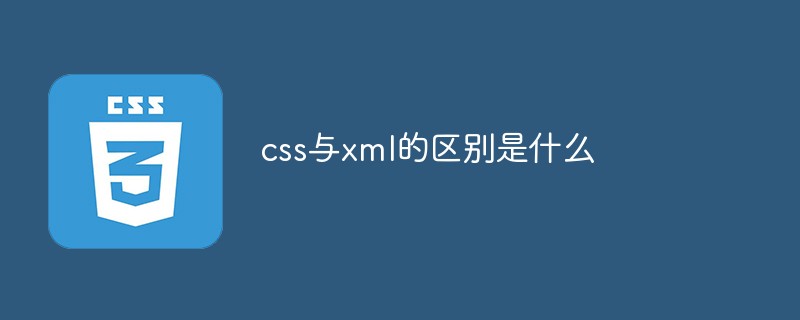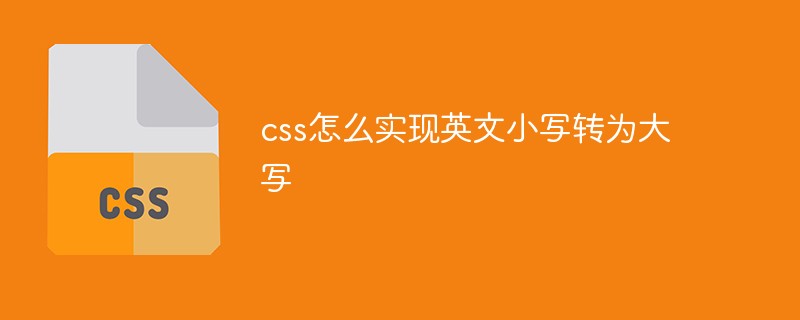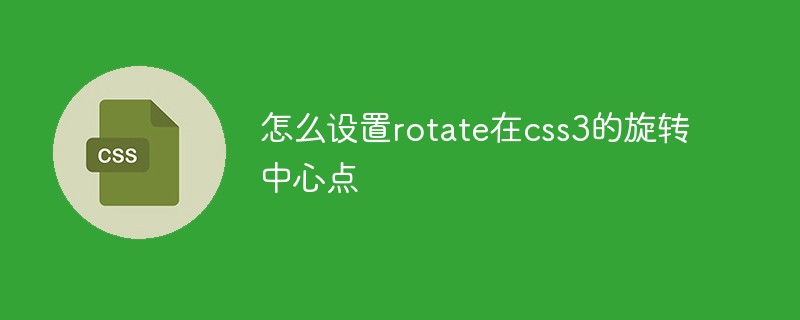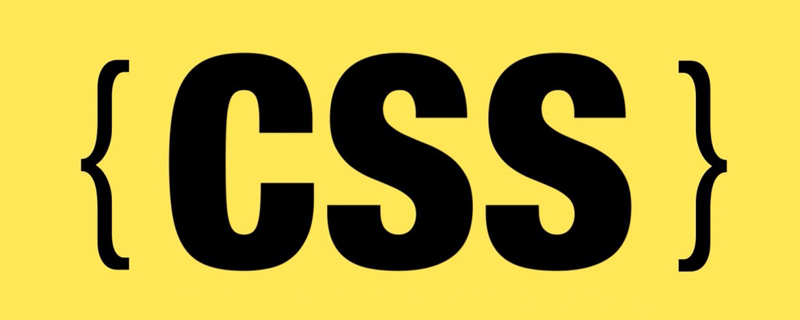CSS elastic layout is a modern web page layout technology that creates flexible and adaptive web page layouts by using CSS properties and values. The Flexbox model is a layout model introduced in CSS3 and is designed to Simplify and improve the arrangement and alignment of web page elements. CSS elastic layout has the advantages of flexible layout, adaptability, simplified nested structure, responsive design, scalability and maintainability. Through CSS elastic layout, flexible, adaptive, and responsive web page layout can be achieved to provide a better user experience.

The operating system for this tutorial: Windows 10 system, DELL G3 computer.
CSS Flexbox (CSS Flexbox) is a modern web page layout technology that uses CSS properties and values to create flexible and adaptive web page layouts. The Flexbox model is a layout model introduced in CSS3 that aims to simplify and improve the arrangement and alignment of web page elements.
CSS elastic layout enables web page elements to automatically adjust size, position, and order to adapt to different screen sizes and devices by defining the relationship between the container and its internal elements. The core idea of flexible layout is to divide the container into two directions: the main axis and the cross axis, and control the layout of the elements on the main axis and the cross axis by setting the properties of the container and elements.
In CSS flexible layout, it mainly involves the following concepts and attributes:
1. Flex Container: The flexible container is the parent element that applies flexible layout. By setting the display attribute Create a flex container for "flex" or "inline-flex". The child elements of a flex container are called Flex Items.
2. Main Axis (Main Axis) and Cross Axis (Cross Axis): The main axis in a flexible container is the main direction in which flexible items are arranged, which can be horizontal (row) or vertical (column). The cross axis is the direction perpendicular to the main axis.
3. Flex Item: The child elements in the flexible container are called flexible items. Flex items can be laid out and aligned based on the properties of the flex container. Each flex item has its own size and location.
4. Main Axis Alignment: Control the alignment of flexible items on the main axis by setting the justify-content property of the container, such as flex-start (starting point alignment), flex-end (end point alignment) ), center (center alignment), space-between (align both ends, equal spacing between items), space-around (equal spacing on both sides of each item), etc.
5. Cross Axis Alignment: Control the alignment of flexible items on the cross axis by setting the align-items property of the container, such as flex-start (starting point alignment), flex-end ( End point alignment), center (center alignment), baseline (baseline alignment), stretch (stretch alignment), etc.
6. Flex Sizing: Control the scaling ratio of the elastic item on the main axis by setting the flex property of the elastic item. The flex attribute consists of three values, which respectively represent the scaling ratio, elastic base value and minimum width.
The advantages and functions of CSS elastic layout include:
1. Flexible layout method: CSS elastic layout provides a flexible layout method, allowing web page elements to automatically adjust their size, position, and order. to adapt to different screen sizes and devices. By simply setting the properties of containers and elements, we can easily achieve complex web page layout effects.
2. Adaptability: CSS flexible layout allows web pages to automatically adapt to different screen sizes and devices. By setting the properties of containers and elements, we can achieve adaptive web page layout. This means that web pages can be rendered optimally on different devices without the need to create separate versions of the web page for each device.
3. Simplify the nested structure: CSS flexible layout can reduce the nested structure and simplify the HTML code. By setting the properties of containers and elements, we can easily achieve common layout effects such as multi-column layout, vertical centering, and horizontal centering, without using complex CSS techniques and additional HTML structures.
4. Responsive design: CSS elastic layout is very suitable for responsive design, which can automatically adjust the layout according to different screen sizes and devices. By setting the properties of containers and elements, we can achieve responsive design effects such as fluid layout, adaptive navigation, and elastic images, providing a consistent user experience.
5. Scalability and maintainability: CSS elastic layout has good scalability and maintainability. By using CSS elastic layout, we can divide the web page into multiple modules and add, delete and adjust them as needed. In this way, we can develop and maintain web pages more flexibly and improve the readability and maintainability of the code.
In general, CSS elastic layout is a modern web page layout technology that allows web page elements to automatically adjust their size, position, and order to adapt to different screen sizes by setting the properties of containers and elements. and equipment. CSS elastic layout has the advantages of flexible layout, adaptability, simplified nested structure, responsive design, scalability and maintainability. Through CSS elastic layout, we can achieve flexible, adaptive, and responsive web page layout and provide a better user experience.
The above is the detailed content of What is css elastic layout. For more information, please follow other related articles on the PHP Chinese website!
 css ul标签怎么去掉圆点Apr 25, 2022 pm 05:55 PM
css ul标签怎么去掉圆点Apr 25, 2022 pm 05:55 PM在css中,可用list-style-type属性来去掉ul的圆点标记,语法为“ul{list-style-type:none}”;list-style-type属性可设置列表项标记的类型,当值为“none”可不定义标记,也可去除已有标记。
 css与xml的区别是什么Apr 24, 2022 am 11:21 AM
css与xml的区别是什么Apr 24, 2022 am 11:21 AM区别是:css是层叠样式表单,是将样式信息与网页内容分离的一种标记语言,主要用来设计网页的样式,还可以对网页各元素进行格式化;xml是可扩展标记语言,是一种数据存储语言,用于使用简单的标记描述数据,将文档分成许多部件并对这些部件加以标识。
 css3怎么实现鼠标隐藏效果Apr 27, 2022 pm 05:20 PM
css3怎么实现鼠标隐藏效果Apr 27, 2022 pm 05:20 PM在css中,可以利用cursor属性实现鼠标隐藏效果,该属性用于定义鼠标指针放在一个元素边界范围内时所用的光标形状,当属性值设置为none时,就可以实现鼠标隐藏效果,语法为“元素{cursor:none}”。
 rtl在css是什么意思Apr 24, 2022 am 11:07 AM
rtl在css是什么意思Apr 24, 2022 am 11:07 AM在css中,rtl是“right-to-left”的缩写,是从右往左的意思,指的是内联内容从右往左依次排布,是direction属性的一个属性值;该属性规定了文本的方向和书写方向,语法为“元素{direction:rtl}”。
 css怎么设置i不是斜体Apr 20, 2022 am 10:36 AM
css怎么设置i不是斜体Apr 20, 2022 am 10:36 AM在css中,可以利用“font-style”属性设置i元素不是斜体样式,该属性用于指定文本的字体样式,当属性值设置为“normal”时,会显示元素的标准字体样式,语法为“i元素{font-style:normal}”。
 css怎么实现英文小写转为大写Apr 25, 2022 pm 06:35 PM
css怎么实现英文小写转为大写Apr 25, 2022 pm 06:35 PM转换方法:1、给英文元素添加“text-transform: uppercase;”样式,可将所有的英文字母都变成大写;2、给英文元素添加“text-transform:capitalize;”样式,可将英文文本中每个单词的首字母变为大写。
 怎么设置rotate在css3的旋转中心点Apr 24, 2022 am 10:50 AM
怎么设置rotate在css3的旋转中心点Apr 24, 2022 am 10:50 AM在css3中,可以用“transform-origin”属性设置rotate的旋转中心点,该属性可更改转换元素的位置,第一个参数设置x轴的旋转位置,第二个参数设置y轴旋转位置,语法为“transform-origin:x轴位置 y轴位置”。


Hot AI Tools

Undresser.AI Undress
AI-powered app for creating realistic nude photos

AI Clothes Remover
Online AI tool for removing clothes from photos.

Undress AI Tool
Undress images for free

Clothoff.io
AI clothes remover

AI Hentai Generator
Generate AI Hentai for free.

Hot Article

Hot Tools

MantisBT
Mantis is an easy-to-deploy web-based defect tracking tool designed to aid in product defect tracking. It requires PHP, MySQL and a web server. Check out our demo and hosting services.

Atom editor mac version download
The most popular open source editor

Dreamweaver Mac version
Visual web development tools

Notepad++7.3.1
Easy-to-use and free code editor

SublimeText3 English version
Recommended: Win version, supports code prompts!







